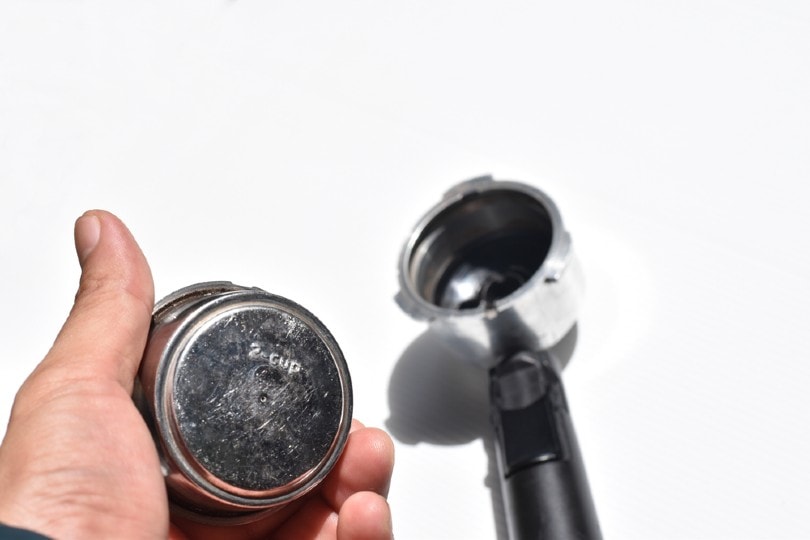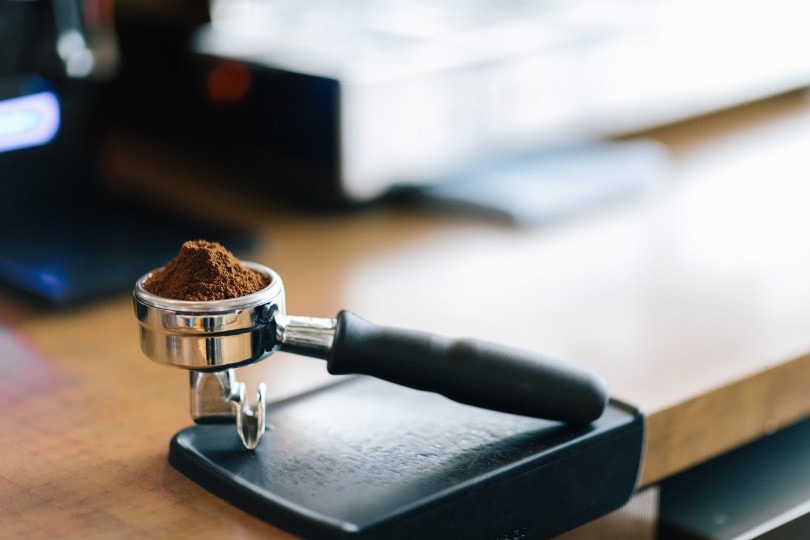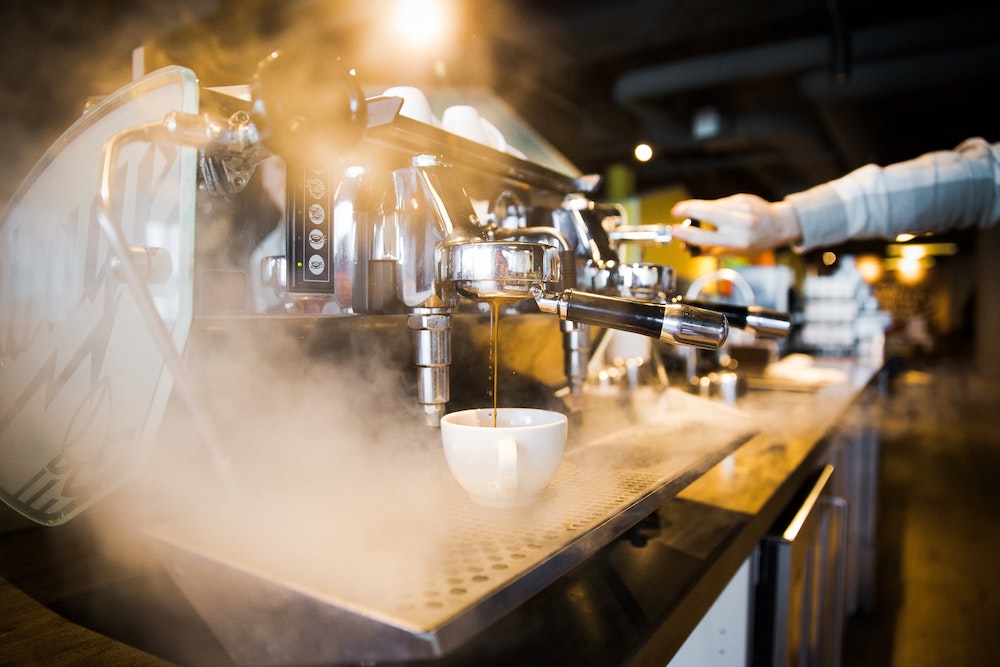
There are diehard coffee drinkers out there who know all the coffee language and what to do with every tool given to them. However, some coffee drinkers, despite loving their caffeinated beverages, don’t quite get all the technical language or know how to use all the tools. Don’t fret! We are here to help.
One such technical tool is a pressurized portafilter. If you’re out and about looking for your first espresso machine, then this is something you are going to run across in your search. By the same token, if you have a friend who makes your espressos, and they’re never bitter, over-extracted, under-extracted, or burnt, we can probably tell you his secret right here.
In this article, we’ll go into what a pressurized portafilter is, what it does, and whether it’s better than a non-pressurized portafilter.

What Is a Pressurized Portafilter?
By definition, a pressurized portafilter is a basket that has a hole in the middle. The hole is small, which helps create pressure buildup to force the coffee through that same hole. Pressurized portafilters are also called double-walled portafilters and are used with espresso machines.

Differences Between Pressurized and Non-Pressurized Portafilters
If you’re holding your pressurized and non-pressurized portafilters and looking down on them from the top, then there’s not going to be a discernible difference. Both are circular, have the same depth, and have tiny holes in them.
Now, flip them over, and you’ll be able to tell what sets them apart. With a non-pressurized portafilter, those tiny holes extend to the bottom surface as is. As soon as your espresso hits those holes, it’ll flow right through and into your cup.
Now, flip your pressurized portafilter over, and you will begin to see the difference. Your pressurized portafilter only has one tiny hole in the bottom. The espresso first has to drip through the tiny holes on the top screen and then drip through the tiny single hole on the bottom screen. This is the major difference between a pressurized and a non-pressurized portafilter, but it’s quite a distinction.
What Are the Parts of a Portafilter?
Most portafilters are made of chrome, brass, or stainless steel, which helps them retain heat. They come with plastic or wooden handles. The components in any portafilter are listed below.

Handle
The handle is intended to help you load the portafilter and lock it into place on your espresso machine.
The Basket
The basket is just what it sounds like. It holds the coffee grounds and acts as a filter to give you the espresso you love.
The Spout
The spout of the portafilter is situated at the bottom and is used to guide the flow of coffee into the cup. A portafilter has one spout but can feature two, according to its type.
Is a Pressurized Portafilter Better for Beginners?
Yes, a pressurized portafilter is much better for beginners because it is more forgiving when it comes to tamping and your grind size. The non-pressurized process has quite a few variables that could be hard for a beginner to handle.
On the other hand, the pressurized process is an automated process, which means you don’t have to care as much about the grind size or even the consistency. A pressurized portafilter is easier to use for a beginner and much easier to get the hang of.

What Are the Pros of a Pressurized Portafilter?
As with any other piece of equipment out there, there are going to be advantages and disadvantages. The pressurized portafilter is no different.
One of the most significant advantages to using a pressurized portafilter, especially for a beginning espresso maker, is that mistakes with poor tamping don’t stop the pressure from building.
However, the most significant advantage is that pressurized portafilters are simple to learn to use and require no prior experience.
What Are the Cons of a Pressurized Portafilter?
Where there are advantages, there have to be disadvantages as well.
Using a pressurized portafilter has a way of restricting your grind size because it can only work with coarse grinds. Also, you’re unable to fine-tune your espresso with this type of portafilter. In other words, you’re stuck with the default settings on your new espresso machine until you’re better at the task and move to a non-pressurized portafilter.

Is a Pressurized Portafilter the Right Choice for You?
If you’ve only recently purchased your espresso maker and are still learning the ropes, then a pressurized portafilter is probably the best choice for you. Once you’ve gotten used to making your own espresso, then you can purchase a non-pressurized portafilter as well.
Pressurized portafilters are also great to have when you’re running short on time but can’t leave the house without that shot of espresso to get you going in the morning.
This is just a little bit about the pressurized portafilter you need to know as a beginning espresso maker. Now that you’ve gone out and purchased your very own espresso machine, you’ll want to experiment and then determine which is the best choice for you.
Though it’s best to start with a pressurized portafilter, as you grow more comfortable with the process, you’ll want to adjust your settings, get a finer grind, and a faster extraction rate, so then it’s time to upgrade to the non-pressurized portafilter version.
In other words, you only use a non-pressurized portafilter if you know what you’re doing and have practiced with your espresso machine for a while. After all, you want to be able to make the best possible espresso for you and your family at home; that’s why you purchased the espresso machine, to begin with, right?
Featured Image Credit: kongkit buasuriya, Shutterstock
Table of Contents
- What Is a Pressurized Portafilter?
- Differences Between Pressurized and Non-Pressurized Portafilters
- What Are the Parts of a Portafilter?
- Is a Pressurized Portafilter Better for Beginners?
- What Are the Pros of a Pressurized Portafilter?
- What Are the Cons of a Pressurized Portafilter?
- Is a Pressurized Portafilter the Right Choice for You?
















